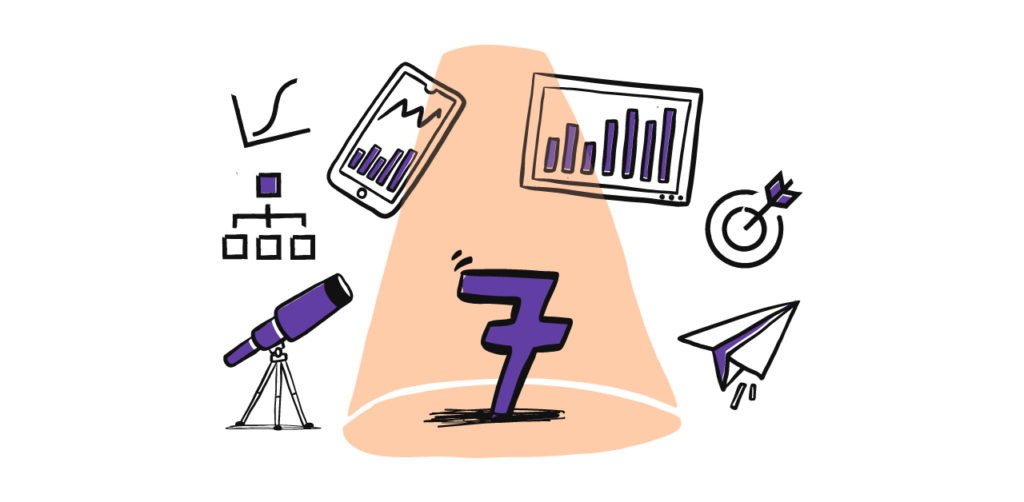Omnichannel marketing strategies for your business involve having and maintaining a presence across several online and offline channels in order to offer a unified experience for customers. It is understanding the unique strengths and benefits each channel can provide, which ultimately helps users convert into a sale and even a loyal customer.
Unlike multichannel marketing where you use multiple channels to promote the same message, often in the same way—for example, cross-posting the same infographic on your Facebook, Instagram, and Twitter—omnichannel marketing means looking at and integrating all your channels in a truly seamless way.
Studies have shown that customers exposed to three or more marketing channels are 250% more likely to purchase from a brand. Customer retention rates are also 90% higher for omnichannel strategies compared to single channel.
Omnichannel marketing strategies have also been shown to create 18.96% more engagement for brands, so what does this data tell us? You should definitely get started on optimizing your campaigns for omnichannel right away, if you haven’t already done so.

Source: Big Commerce
Omnichannel Marketing Strategies
Ready to optimize your omnichannel marketing tactics to get more ecommerce sales? Here are some top tips to get you started.
1. Create shoppable posts on social media
Marketers are more than familiar with the phrase “link in bio” for advertising on Instagram. Thankfully, Instagram has added a feature to make its platform more shoppable by integrating ads to your Facebook shop.
This means businesses can now tag products in their posts and add a dedicated “Shop” tab on their page. Consumers can complete the sales process, from product discovery to checkout, all without leaving the app.
Because of this feature, many popular ecommerce site builders like Shopify allow users to optimize shoppable social media posts. This way, customers are able to see items they like directly from a Facebook or Instagram store and then add these items to their cart right away.
Be sure to check with your ecommerce store builder if you’re able to use this powerful integration. Remember that the easier it is for customers to checkout products they like from your social media, the more likely they are to make a purchase right away.

Source: Shopify
2. Invest in the right tools
It can be tricky to manage your omnichannel marketing campaigns and data, but the right tools make the process more streamlined so you’re on top of every campaign and every channel.
Sellbrite, for instance, makes your ecommerce site easier to manage and monitor. You can add your existing marketplaces, import your inventory, connect your multiple marketing channels, and synchronize your inventories all in one place. You can also ship your products through Sellbrite no matter which channel the customer chose to buy from, allowing you to focus on your overall omnichannel strategy.

Source: Sellbrite
3. Turn your invoice into a marketing tool
Everywhere your customers go online, something is competing for your customer’s attention, so you should use all your channels as much as possible to sell and promote your business. You can also optimize invoices to become useful marketing tools and generate more conversions.
Customers are sure to look at the invoice to check the prices and any fees. You can add interesting visuals of the products they may be interested in or products customers like them have previously purchased. Through optimized invoicing, you can even promote any marketing campaigns you’re currently running.
For example, mention any perks you can offer, such as a discount on their next order or an incentive for leaving a product review. Remember, even invoices can be exciting for customers, and simple tweaks like this can elevate brand experiences for your buyers.

Source: FitSmallBusiness
To implement this strategy, be sure to use professional invoicing software like Wave that allows you to send customized, branded invoices to your ecommerce customers right after they make a purchase. Integrate these apps with your online store, add your branding and desired messaging, and you can provide customers a more seamless and unified experience from all the way from browsing to post-purchase.
4. Launch a retargeting campaign
Your loyal customers deserve your reassurance, but you should also pay attention to leads that are yet to convert. By applying lead nurturing techniques, you can send personalized and relevant content to your leads at different stages in the marketing funnel, even if they haven’t subscribed to your email list or followed your social media accounts.
Retargeting campaigns through email can help you track consumers’ behaviors after they leave your website even if they didn’t buy anything yet. Depending on what information you’ve collected from your customer, you can either run retargeting ads on social media and third-party sites or send retargeting emails to try and recover abandoned carts.

Source: Wishpond
5. Think mobile-first
More people are using mobile devices like smartphones and tablets for shopping. Consumers may leave your website if they feel the pages load too slowly and the website design isn’t fit for mobile use. Do customers need to pinch and zoom in order to read product descriptions? If so, your webstore isn’t optimized for mobile use.
You need to create responsive and well-designed websites to let your customers view your content on whatever device they prefer. And you should definitely pay attention to the landing pages where the customers will be filling in personal information. Aside from using simple themes and visuals, customers should be able to easily find buttons, forms, and other CTAs on your website.

Source: Digital Doughnut
6. Personalize your recommendations
Customers engage with your brand through any one or several of your omnichannel platforms. You can track their buying or browsing behavior and create a unique fingerprint for each customer. Then you can provide a personalized experience the next time they engage with your brand.
Since you have an idea of and the data about what your customer likes, you can cross-sell products or services to increase sales by suggesting additional related or complementary items.
Add images and links of related products or products that other customers often buy together at checkout. You can also encourage customers to add more to their cart or buy in bulk with afree shipping offer for reaching a certain checkout price.

Source: Sellbrite
7. Track and monitor your results
Using metrics and KPIs offers a scientific way to track and evaluate the impacts of your omnichannel marketing campaigns. Gathering and analyzing data can help align your goals with your current campaigns and tell you when you need to make adjustments.
You can use Google’s framework for marketers who want to turn their data into valuable action points. First, you need to identify what you want to achieve, list the needs or issues to be solved by the data, present the data into a visualized result, and understand how to apply the data into the company.

Source: Shippo
Key Takeaways
Omnichannel marketing is an exciting way to reach more customers, nurture leads, and boost your ecommerce sales. While handling multiple channels may be challenging, you can use the right tools, like Sellbrite, to manage your campaigns and inventories with ease. You can sign up for a free trial on Sellbrite’s website and get started on your omnichannel optimization journey today.

